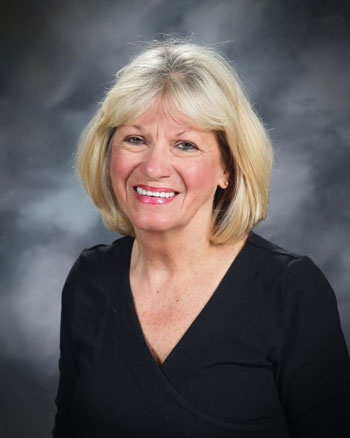When UAB School of Education and Human Sciences alumna Harriet Callahan graduated from Murphy High School in Mobile in 1966, she planned to study pathology, she says. But her race toward a career in science took a detour after her freshman year in college when she married her husband, a fellow student.
The couple decided that he would finish school first, Callahan says. So, with her dream of becoming a pathologist on hold, she left the University of Alabama in Tuscaloosa and settled into her new life as a young wife.
Today, Callahan, 66, works as a middle school science instructor in Mobile. And, in a twist of fate, she teaches a popular forensic science course where students learn what it is like to be a crime scene investigator.
Callahan says her journey to becoming a science teacher started after she had children. Back then, she says, raising the couple’s two children kept her busy, and the family moved from city to city for her husband’s job. But as her children grew older, her desire to earn a college degree returned.
“As they grew up, wherever we were located at the time, I went to school to take a couple of classes,” she says. “I was taking most of the science classes that were offered like biology and chemistry, not really knowing which direction I was going in because I didn’t know that I could have a career.”
Eventually, the family moved to Birmingham, and Callahan enrolled at UAB in 1987. By then, she had decided to become a science teacher. She says that attending classes taught by Associate Professor Emeritus Joe Burns, Ed.D., in the UAB Department of Curriculum and Instruction gave her the desire to teach middle school science.
“Dr. Joe Burns was the one that zeroed in on different activities that children were so excited about,” she says, “and he was the one who led me in that direction.
“I could not have asked for a better group of gifted faculty members than those that I had with every class I took,” she says. “Very experienced. … The faculty there was outstanding.”
Callahan graduated from UAB in 1992 and scored her first teaching job at Jones Valley Middle School in Birmingham. While at Jones Valley, Callahan taught an advanced biology class, she says.
After four years at Jones Valley, Callahan and her family moved to Albany, Ga., where she taught school for a year before they relocated to her hometown of Mobile. In 1996, she started teaching the physical sciences at Lott Middle School in nearby Citronelle.
During her 16 years at Lott Middle School, Callahan specialized in presenting hands-on science experiences for her students. She even used her efforts to earn her pilot’s license as a way to teach her students about the laws of physics, she says.
Then in 2012, Callahan took a teaching job at Burns Middle School in Mobile. The principal at the time wanted her to continue teaching hands-on science as a STEM elective course, she says. This time, however, Callahan says she had an idea. She wanted to attend a summer forensic science workshop for teachers in Albany, N.Y., and teach the curriculum to her students.
“I explained it to him,” Callahan says, “and told him you couldn’t get any more hands on than that. It also filled many of the STEM objectives.”
In her forensic science class, students learn skills such as taking tire impressions, fingerprinting, and analyzing bite marks. In addition, Callahan invites members of the local sheriff’s department’s crime scene unit and technicians from the medical examiner’s office to talk with students about real-life cases and how they conduct investigations. Callahan also talks to her students about related career opportunities they can explore such as computer forensics.
Her students’ reaction to the class has been positive, she says, and they have learned that real-life crime investigations are nothing like what they see on popular television shows like “CSI.”
“Initially, they’re very much intimidated,” she says, “thinking that it is going to deal with the morbidity of it all. But once they find out that they’re actually doing detective work and not dealing with the gruesome end of it, the students love it.”
The forensic science classes have become so popular that teachers at other local middle and high schools have expressed their interest in teaching the course, she says. As a result, she has begun talking to her supervisors about the possibility of someday hosting a summer forensic science workshop for educators.
Besides teaching, Callahan says she enjoys flying single-engine Cessnas and competing in triathlons.
“I had always been a road runner,” she says, “and I had been a cyclist when we lived in Denver. I was successful at it, and that will drive anybody. If you’re successful at something one time, you’ll keep pushing at it.”
Callahan, who is now a grandmother, says she is still driven to continue teaching her forensic science classes and has no plans to slow down.
“I don’t want to give this up yet,” she says. “I’m having fun. To see the wow look on the students’ faces. You can’t beat that.”